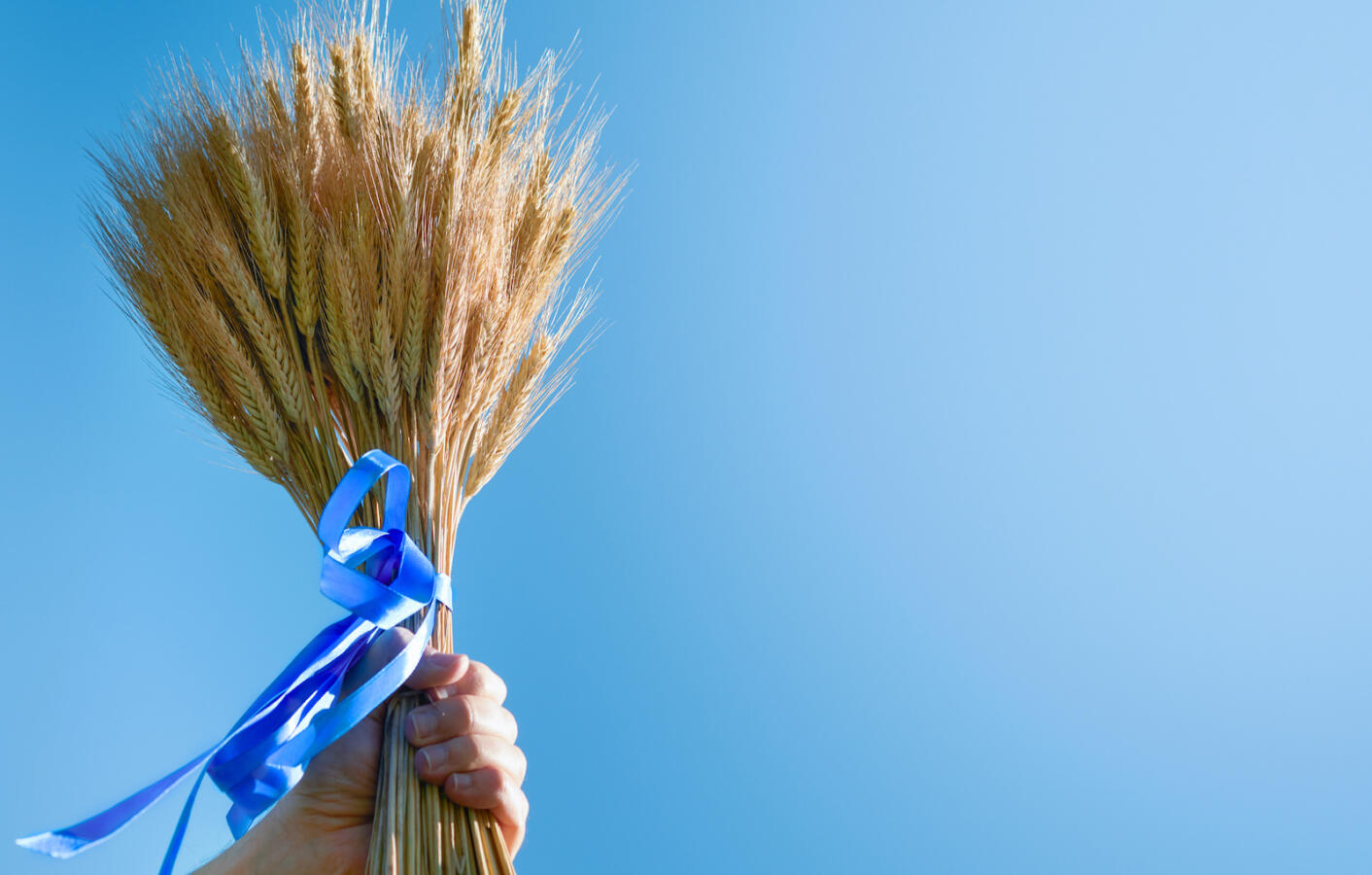The Shavuot holiday that we observed last week commemorates two different kinds of harvests. Originally an agricultural festival, Shavuot marked the culmination of the wheat harvest in the ancient land of Israel. Only later did the rabbis layer on the receiving of the Torah to the holiday. Just as we celebrate the bounty of the land, we celebrate the bounty of Torah — the sustenance that feeds our hearts and nourishes our souls.
In ancient days, as the wheat blossomed in its golden fullness, the sheaves would be gathered into bundles and waved in celebration of what had been tended in the fields. Similarly, the celebration of revelation is a kind of harvest as well. All year we’ve studied and contemplated the Torah, turning over ideas to see how they speak to the conditions of our lives right now. Revelation is thus not a disembodied, momentary insight, but rather the bounty of this particular year’s harvest of insight. Both kinds of kernels — of grain and Torah understanding — need to be nurtured and processed to be useful.
Shavuot marks not only the culmination of these processes, but new beginnings as well. In Exodus, Shavuot is referred to as the feast of the bikkurim, the first fruits that appear on trees in the springtime. According to Deuteronomy 26:2, these first barely ripe fruits must be offered to God. Much like the new learning birthing with us, we offer these early insights to God to be guided in what they need to come into their full, juicy sweetness.
Shavuot starts the season of sweet sugars that will delight our tongues and decadently run down our chins; that we will feed to children eager for their reds, purples, blues and pinks bursting with deliciousness in the summer sunlight; that we will arrange artfully on platters and transform into pastries and pies to bring to neighbors and loved ones in friendship and with care. Like the fruit of the tree, the revelations that come to us on Shavuot are meant to be nourishing, sweet and shared.

Help us keep Jewish knowledge accessible to millions of people around the world.
Your donation to My Jewish Learning fuels endless journeys of Jewish discovery. With your help, My Jewish Learning can continue to provide nonstop opportunities for learning, connection and growth.
First fruits — those gems of juice and succulence that we hold in our hands — are brought into being through the intimacy and mutuality of sunlight and soil, pollinator and pollen, patience and anticipation, cultivation and surrender. Cells transform and combine, assembling themselves together into figs and apples and berries.
On Shavuot, we too assemble, the many parts of our people coming together as one. When the Israelites prepared to receive at the foot of Mount Sinai, the Torah tells us that they entered the wilderness vayichan sham — and encamped there. The biblical commentator Rashi asks why this verb, vayichan, is written in the singular. He answers: As one person with one heart the people camped at the base of the mountain. To prepare for revelation is to assemble ourselves from many diverse spaces and places and become one, at least for a moment.
Plant, animal, insect and fungal worlds uniting, intertwining for weeks, months and even years to become one fruit. On Shavuot, the fruiting body of their tangled web of co-creation recalls for us the many intertwining systems of life and connection that constitute who we are, individually and collectively, in all our dazzling, fruity, sweet magnificence. So too does Torah yield a particular kind of sweetness when we celebrate our holy entanglement as one.
The wheat harvest reminds us where we’ve been, what we’ve been counting towards and waiting for. It blesses us with a coming to completion. The first fruits remind us of the sweetness that is just beginning, tantalizing our tongues for the very first time, whetting our appetite for more.
And so, as we return from this holiday of revelation, we ask: What is it that we’ve been tending that we are now harvesting? What joy and sweetness are we just coming to know? And what disparate parts of who we are — individually and collectively — might we join together as one so that the sweet knowing of our connection can find voice?
This article initially appeared in My Jewish Learning’s Shabbat newsletter Recharge on June 3, 2023. To sign up to receive Recharge each week in your inbox, click here.



